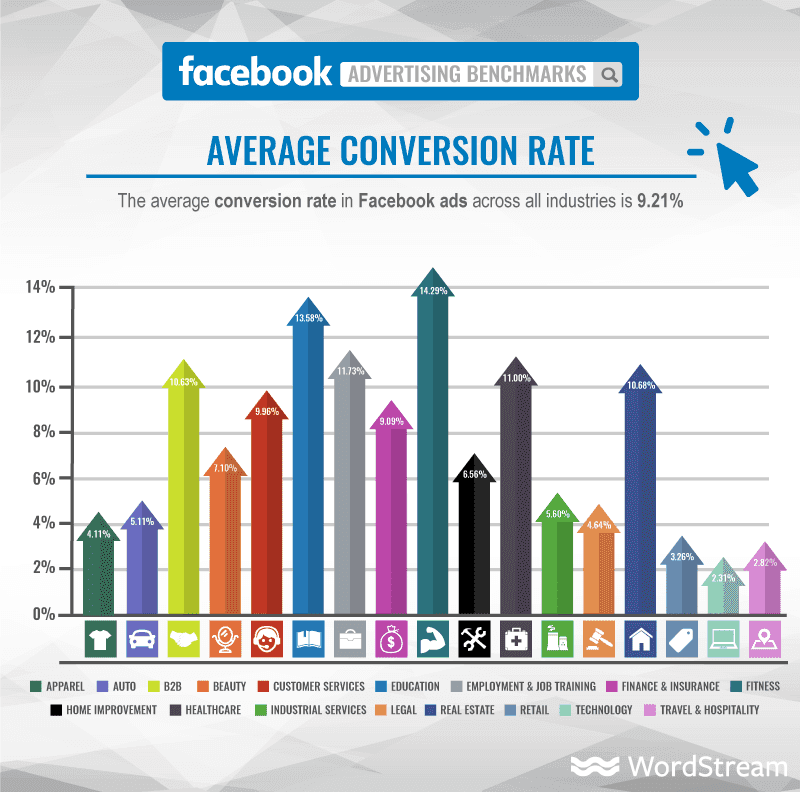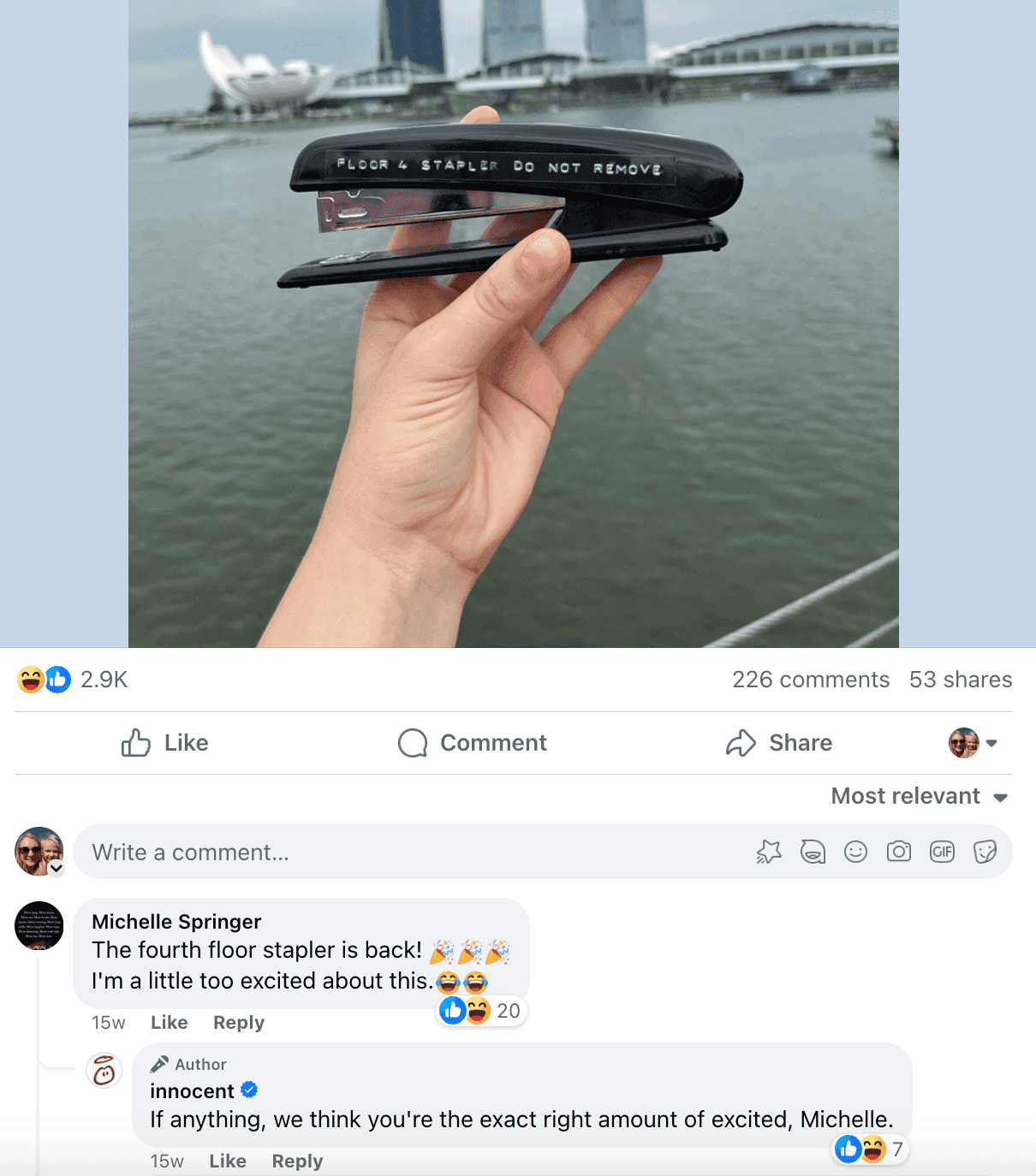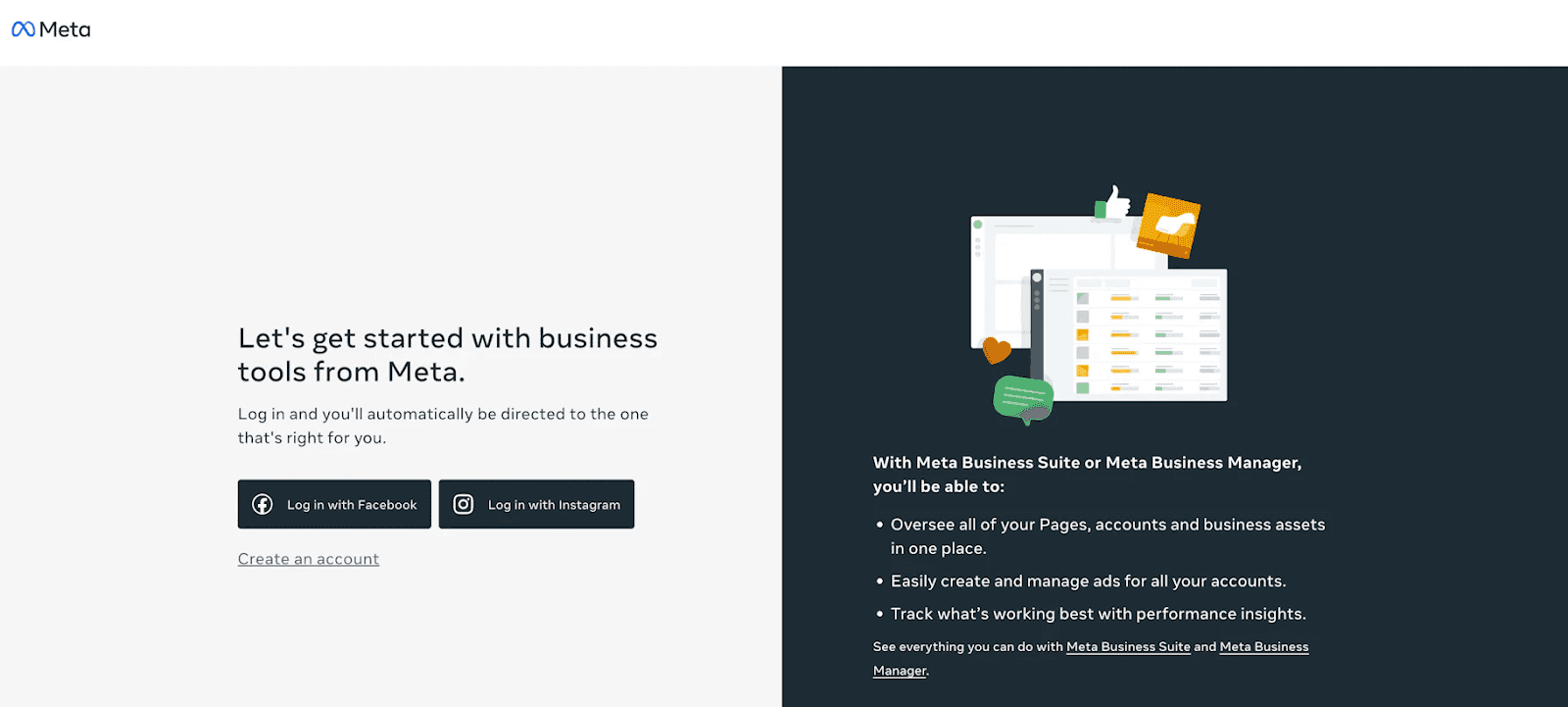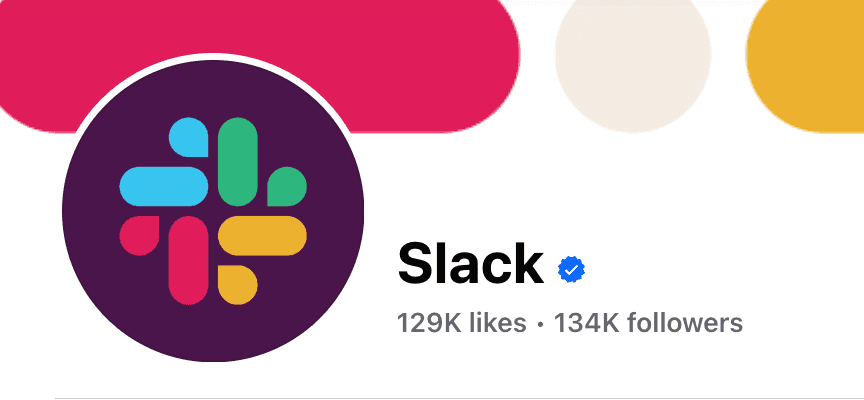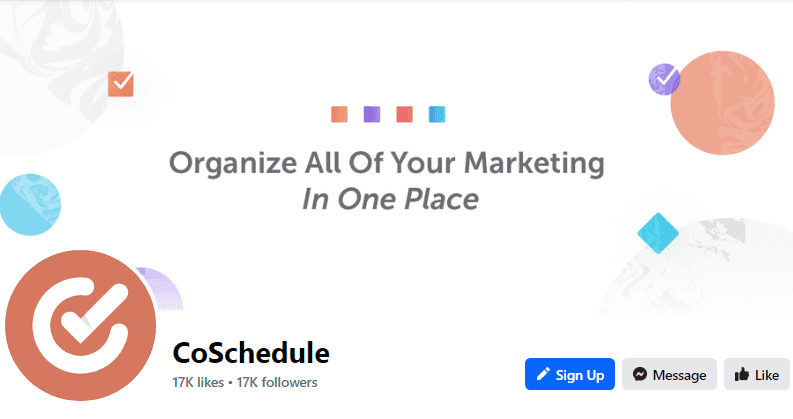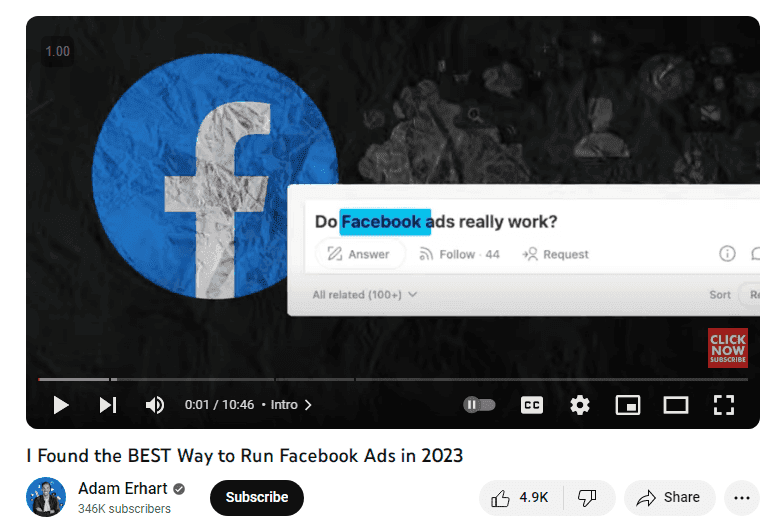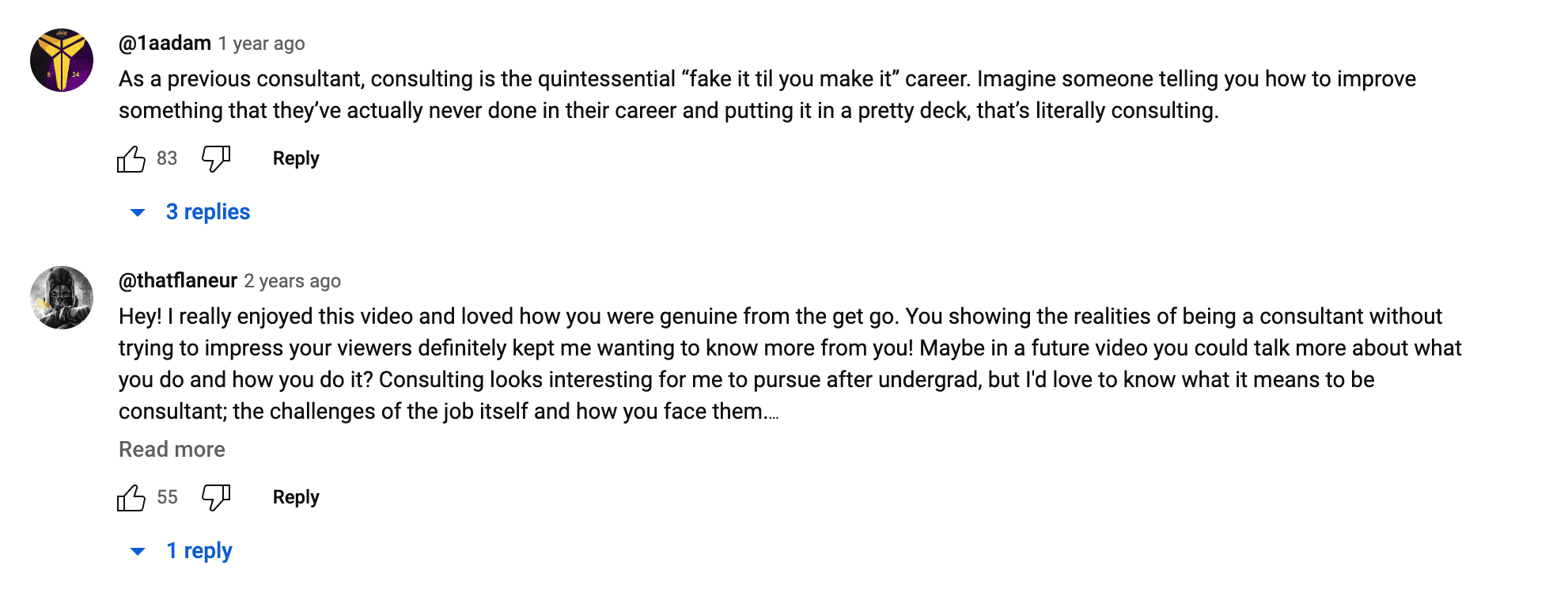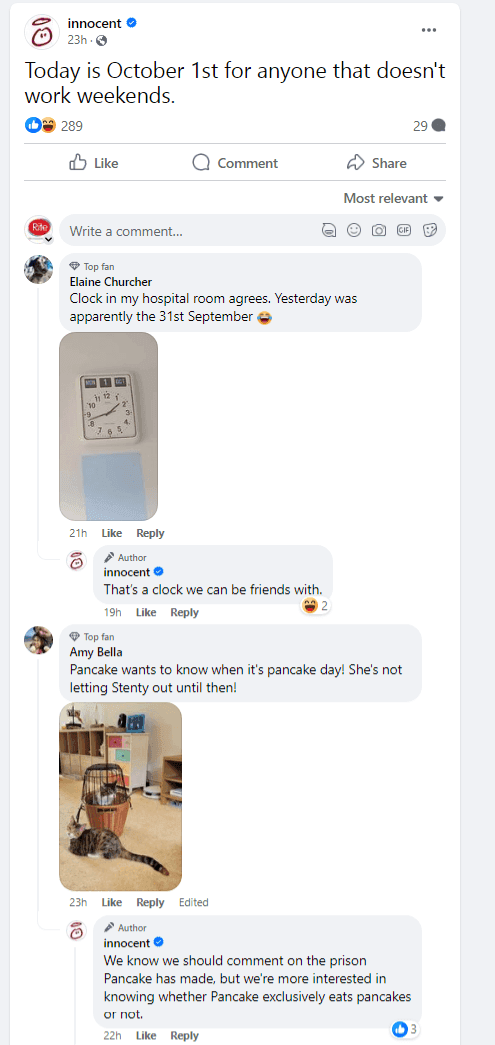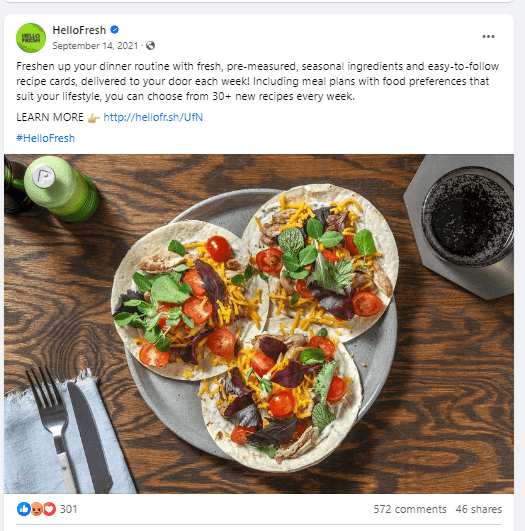Facebook has 2.99 billion monthly active users in the world. That’s a large audience to reach!
Besides its popularity among users, Statista reports Facebook is the most-used social media platform by marketers in 2023.
Let’s explore why Facebook marketing for business growth is essential, including ideas you can use.
What Is Facebook Marketing?
Facebook marketing is using Facebook to promote a business and its products. It also includes the use of other Meta (Facebook’s parent company) platforms for connecting with potential customers. These platforms include WhatsApp (2 billion users), Instagram (2 billion users), and Facebook Messenger (931 million users).
Facebook marketing also involves selling your products via Facebook Shops, a mobile-optimized online store in the Facebook app.
Recommended Reading:
The Benefits Of Using Facebook For Business Marketing
Thanks to its vast and diverse user base, the target audiences for many businesses are active on Facebook. Even B2B brands get an average conversion of 10.63% on their Facebook ad spend, above the 9.21% average conversion across industries.
Facebook also offers precise targeting capabilities to reach the users most likely to be interested in your products.
How To Create A Facebook Marketing Strategy
A well-crafted Facebook marketing strategy is the foundation for success on Facebook. Below are five steps to creating an effective Facebook marketing strategy.
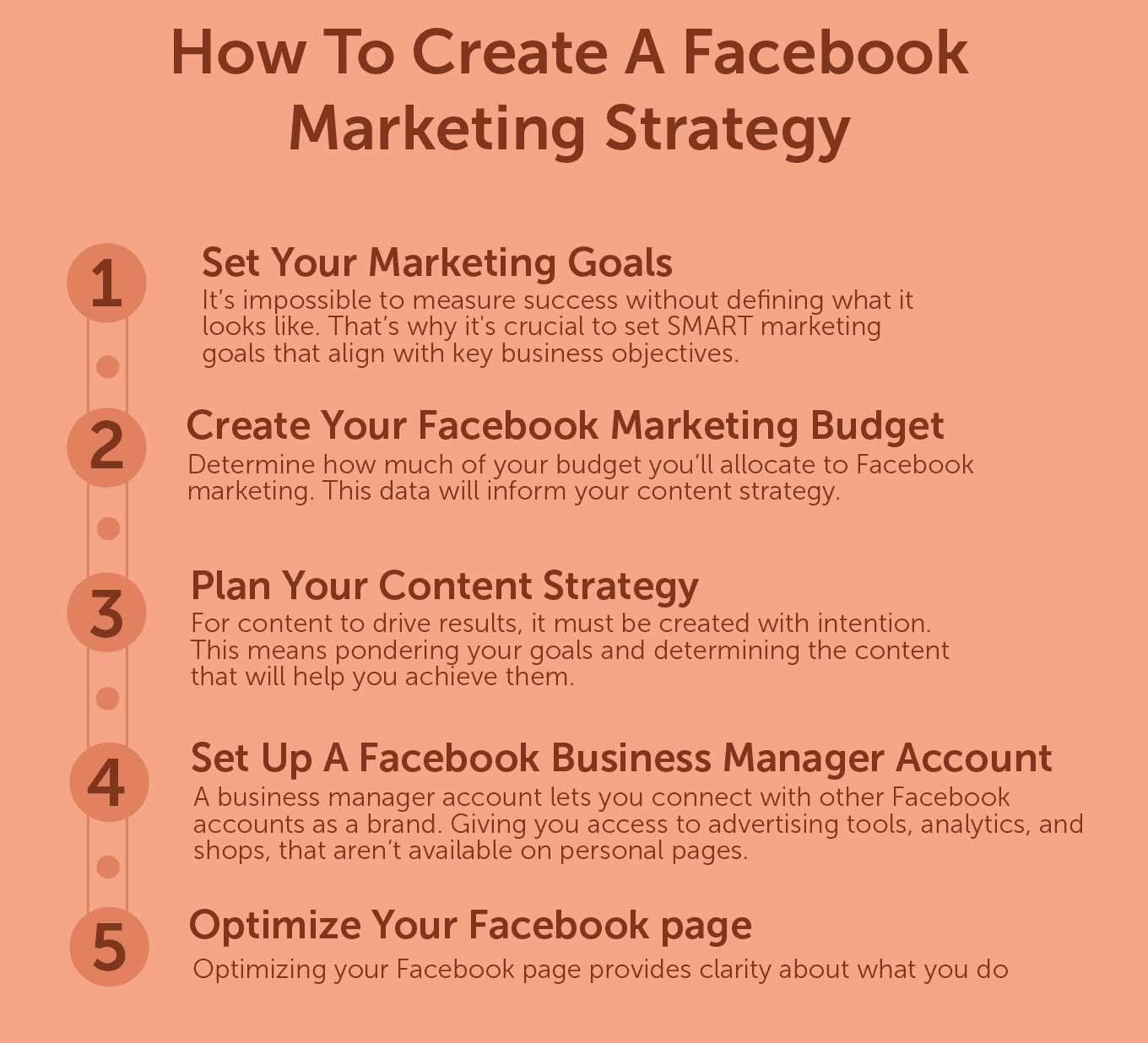
1. Set Your Marketing Goals
According to our Marketing Strategy Trend report, marketers who set goals are 376% more likely to achieve them. Your chances of success further increase if you document your strategy and workflows.
Examples of SMART Facebook marketing goals include:
- Grow brand awareness: “We will boost our Facebook following, reach, and engagement by 50% within the next six months. We’ll achieve this by engaging with followers in the comments and by sharing educational blog posts and video content.”
- Generate new leads: “We will bring in 50 new leads within the next six months using Facebook ads. We’ll also offer a valuable lead magnet in exchange for email addresses and phone numbers.”
- Increase website visits: “We’ll drive more website visits by creating valuable content that builds trust with followers and earns their goodwill.”
2. Create Your Facebook Marketing Budget
Determine how much of your budget you’ll allocate to Facebook marketing. This data will inform your content strategy. Your budget plan may include funds for content creation, software subscriptions, Facebook ads, and influencer marketing.
3. Plan Your Content Strategy
Merely publishing content isn’t marketing. For content to drive results, it must be created with intention. This means thinking about your goals and determining the content that will help you achieve them.
For instance, Innocent Drink’s content strategy involves creating humorous posts that build brand awareness, give customers a look into its business, and forge deeper connections with customers.
Planning your Facebook content strategy also involves deciding the types of content you’ll create — e.g., text-based content, images, infographics, videos, stories, events, and whatnot — and setting your posting schedules.
Recommended Reading: 15 Top-Performing Facebook Post Ideas
4. Set Up A Facebook Business Manager Account
A business manager account lets you create a Facebook Page to connect with other accounts as a brand rather than as an individual. A business account also gives you access to Facebook’s advertising tools, analytics, and Facebook Shops, which are unavailable on personal pages.
To create a business account, go to business.facebook.com. You’ll be prompted to log in with your personal Facebook account or create a new account.
[Note that you need a personal page to set up a business manager account.]
5. Optimize Your Facebook Page
Optimizing your Facebook page provides clarity about what you do. Here’s how to do it:
- Enter Your Page Name: This is the name of your brand or organization.
- Enter a category that describes your business: Choose up to three categories that align with your offer.
- Fill out the Bio Section: In under 101 characters, describe your business and show what’s in it for readers. In the example below, Pringles shares what it represents and expresses the playful nature of its brand.
- Enter your contact info: Provide your business’s email address, website, phone number, physical store address, social links, and any other way your audience can connect with you.
- Upload your Profile Picture: The ideal profile picture is your business’s logo. Use Facebook’s recommended image size (170px x 170px) to keep your logo from being cropped off.
- Upload your Cover Photo: Your cover photo is the first thing people see when they visit your page, so ensure it stands out. You can use it to convey your value proposition, display new products, advertise upcoming events, etc.
Facebook Advertising
Facebook’s organic reach has been declining for about a decade. However, Facebook ads help you reach a broad audience faster than you would with organic content. With a minimum daily ad budget of $1, this benefit is available to businesses of all sizes.
Facebook has the most sophisticated targeting capabilities of all the social media platforms. It lets you use its massive user data to target specific demographics. You can target users based on age, location, gender, interests, relationship status, workplace, behavior, and past interaction with your brand and track results using Facebook analytics.
To learn more about Facebook advertising, watch this brilliant video by Adam Erhart.
Recommended Reading: TikTok Marketing For Business
Facebook Marketing Ideas To Promote Your Business
Understand Your Target Audience
You can’t create content that resonates if you don’t understand your audience. So, review your brand’s buyer persona document to understand your audience’s needs, frustrations, and interests.
Conducting one-on-one interviews with customers and using social listening are two other ways to know your audience’s needs and generate great content ideas.
For instance, management consultant and YouTuber Hisham Khan made a video about a week in the life of a consultant on his YouTube channel. The video was well received, but dozens of commenters complained the video doesn’t discuss what consultants really do.
Hisham took the feedback and made another video about real-life examples of his job duties.
Establish Your Voice & Tone On Facebook
The voice and tone that your brand carries online should be a significant part of your strategy.
How you sound should reflect what your brand represents.
To develop your voice, you need to answer the question, “What should my company say online?” This doesn’t have to be complicated. All you need to do is follow the rule of three by asking: “If I were to pick three adjectives that described the voice of my brand on Facebook, what would they be?”
Once you have those three adjectives, make a “this but not that” list.
- We are funny but not crass.
- We are professional but not stuffy.
- We are peppy but not obnoxious.
How about tone?
Your tone will be in constant flux because it is not just what you say but how you say it. It is the exact opposite of your voice because it will change with every post you create. For example, if your company is experiencing technical difficulties and your voice is usually upbeat and fun, you wouldn’t want to sound like that when you let your customers know what’s happening. They would expect you to be serious and tell them the steps your team is taking and when they can expect to see the site back up and running.
Engage With Your Community
Doing this will humanize your brand, drive engagement, and strengthen brand connection. Social media is an avenue to socialize with your followers. Don’t make it into a one-way conversation. See how Innocent does this by having fun with followers in its Facebook comment section:
Give Away Great Content For Free
You build trust when you give your Facebook followers the tools they need to be successful without you. This trust builds loyalty, which makes them more likely to buy your product later. It’s called the Halo Effect.
Look at how HelloFresh does this:
By giving away recipes for free, HelloFresh is showing you how to cook a great dinner without requesting a dime in return. This builds trust and shows people how delicious their recipes are.
With trust established, their ideal customer will probably think, “Hey, wouldn’t it be a lot easier if these ingredients just showed up at my door?”
Boom! All that free content you gave away just converted a new customer.
Optimize Your Social Media Posts
The CoSchedule Social Media Optimizer makes it easy to analyze your posts before publishing. To use the tool, type your message into the analyzer:
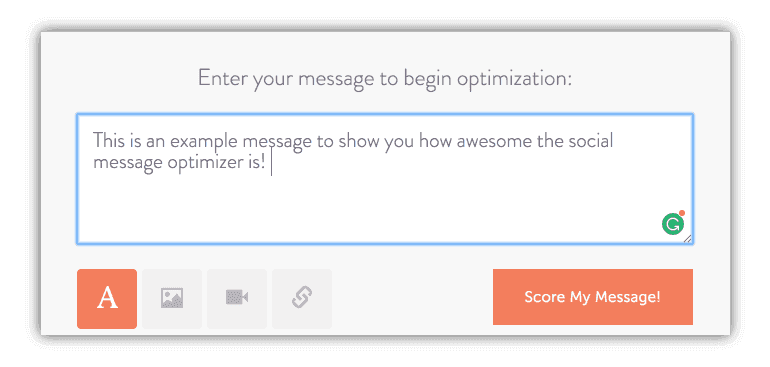
Hit Score My Message, and you’ll get your score for each social channel.
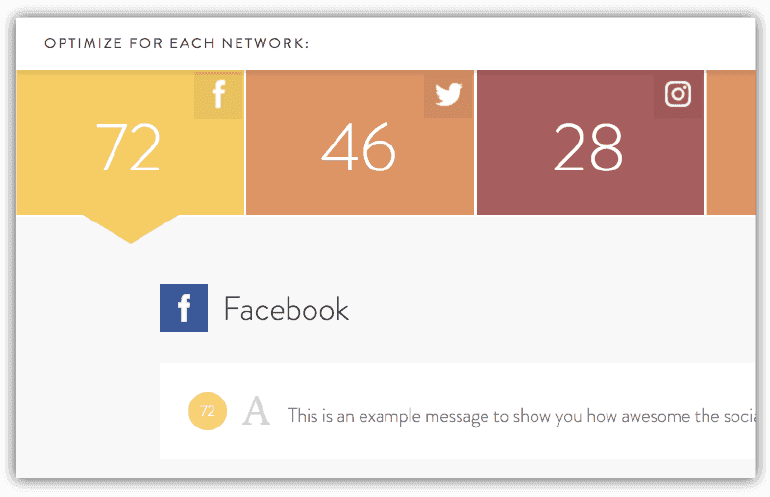
As you scroll down the list, you’ll see an overview of what your message does well and what you can do to improve.

You can keep scrolling down the screen for more information on improving your score. Once you know what to improve, re-write your message and score it again:
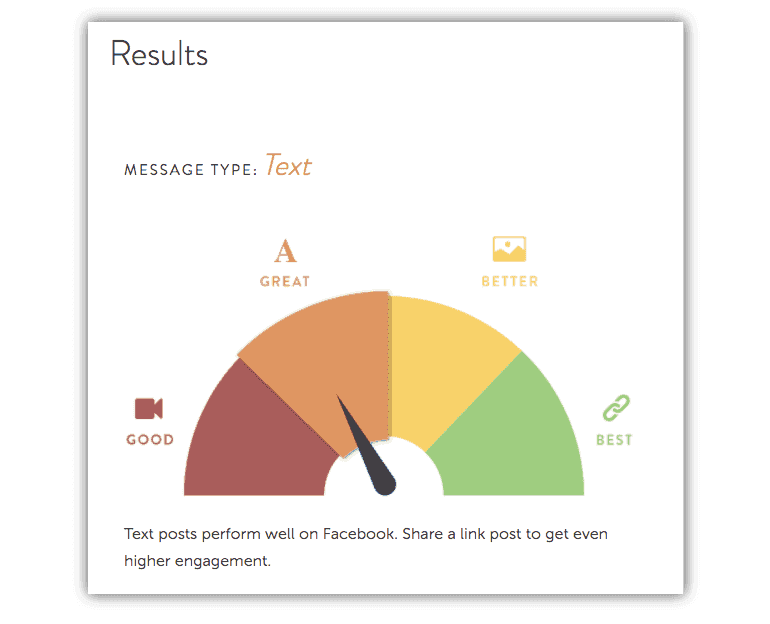
Use Best Time Scheduling
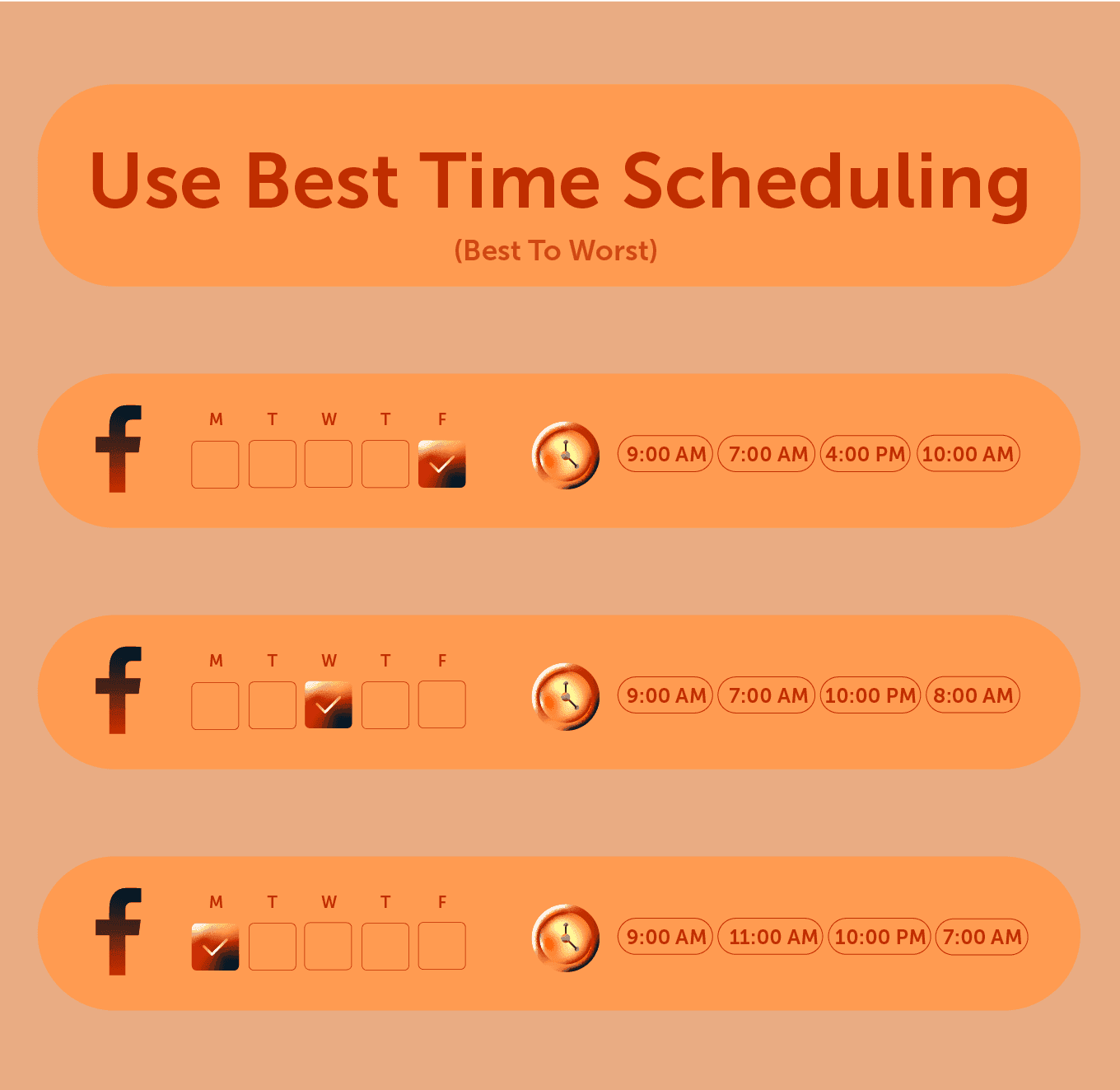
Based on our analysis of 30,000+ accounts, the best days to post on Facebook are Monday, Wednesday, and Friday. Posting on these days will help you gain maximum exposure.
Even with this info, it’s demanding to schedule your post to be sent at these times manually. Fortunately, the Best Time Scheduling feature in the CoSchedule Social Calendar helps you eliminate manual labor. This handy feature intelligently chooses the best time to publish, ensuring you publish each post optimally.
To use the Best Time Scheduling feature, create your message using CoSchedule’s Social Calendar. Next, scroll to the bottom of the post and select ‘best time’ from the drop-down menu on the right-hand side of your post.
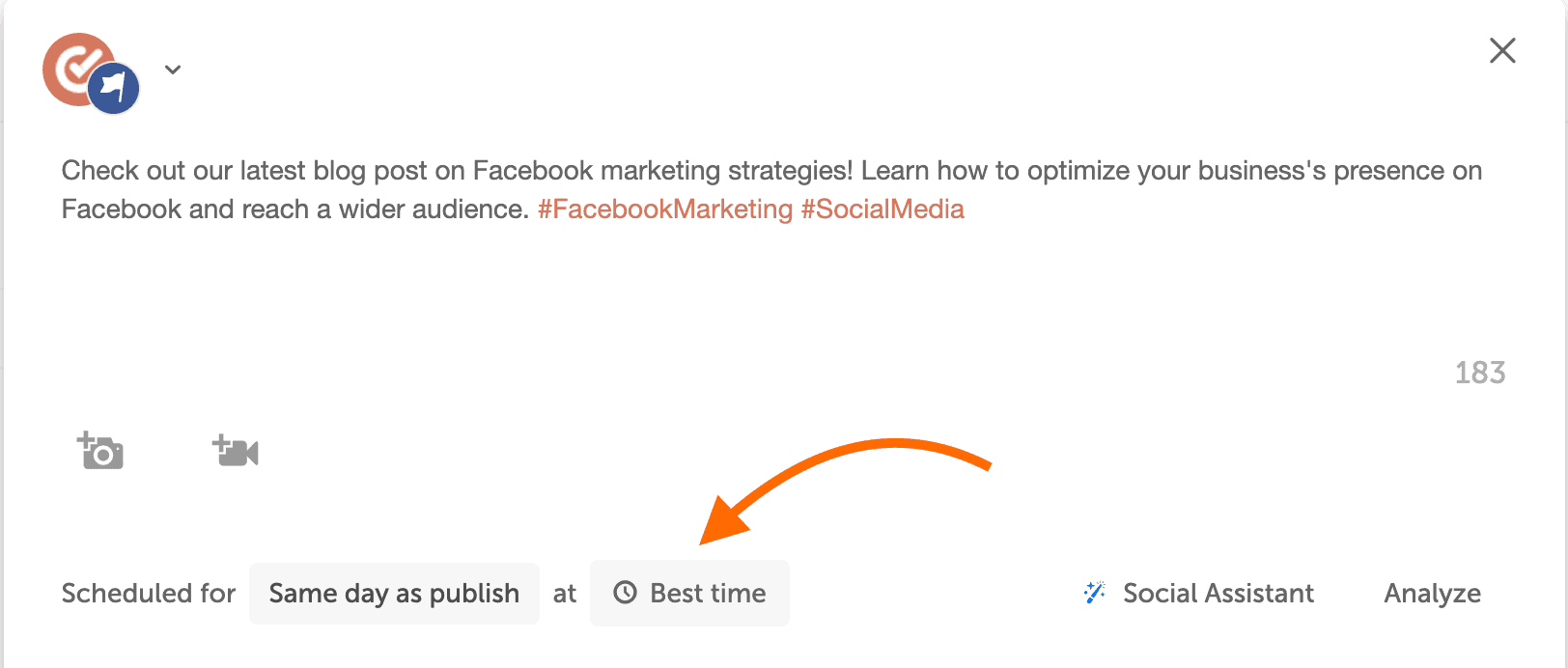
Use Monitoring Tools
There are quite a few options out there for social media monitoring, and each offers a slightly different benefit.
Some, like Rival IQ, focus on benchmarking, eliminating the need to bounce from channel to channel just to see competitor activities. Tools such as this make it easy to see how your social media activities stack up against the competition.
Others, like Brandwatch, allow you to stay on top of what people are saying about your company and visualize how your specific social media campaigns are performing. Here are a few things to remember when choosing the right monitoring tool for you:
- Write your objectives: Are you looking to see how your brand stacks up against the competition? OR are you looking to be in the know about what people are saying about your company? Making this distinction will help in choosing the right tool.
- Consider must-have functions: Some tools offer more powerful filters, such as sentiment analysis, language breakdowns, and geographic location. Will you need these special features?
- Resources: We’re all on a budget, and some of these monitoring tools cost as much as a small car. Do your research beforehand so you don’t fall in love with a tool only to realize you can’t squeeze it into your budget.
Cross Promote Ads On Instagram
Fix the following to promote your ads on both channels:
- Connect your Instagram account to your business page on Facebook since the ads are run through your business page.
- Ensure your ads are viewable on mobile since Instagram ads are only accessible through mobile phones.
- Turn on the Instagram ad feature for each ad you want to push to both channels.
Facebook discusses how to use Instagram ads in this quick guide.
Test Ad Design & Copy
When you start out with Facebook advertising, everything feels like a guess at first. So, always be testing ad design and copy. It’s the best way to know what will work for your audience.
Test the following elements:
- Colors
- Images with and without text
- Calls-to-action
- Value propositions
- Copy length
Adjust one variable at a time and see how it impacts performance. Over time, you’ll understand what works and what doesn’t.
Facebook Is One Piece Of The Puzzle— Now What?
Facebook marketing isn’t easy. However, armed with this guide, you’ll have the edge over your competition.
Want to further dip your toes into marketing on Facebook and other social media platforms? Take the AMI Social Media Strategy Certification Course.
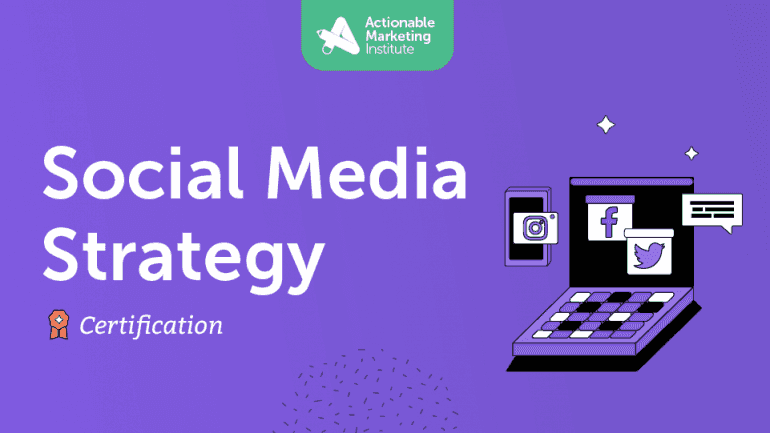
Recommended reading: Hashtag Ideas: The Ultimate Guide To Boost Your Social Media Presence

